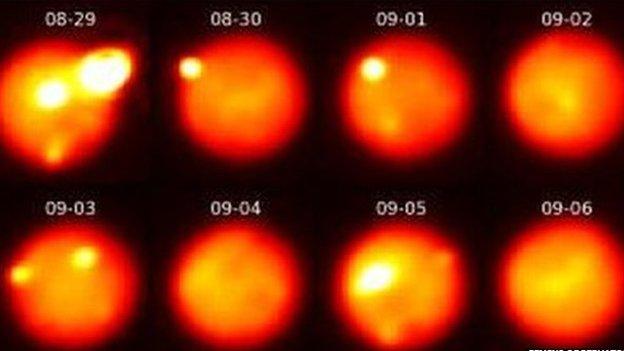Jupiter's moon Io 'volcanically active for billions of years'
- Published
- comments
New research has found Jupiter's moon Io is the most volcanically active place in the solar system and has been for billions of years.
The work by the California Institute of Technology (Caltech) suggests it's been volcanic for the entire existence of our solar system.
So for the last 4.57 billion years it's been spewing lava.
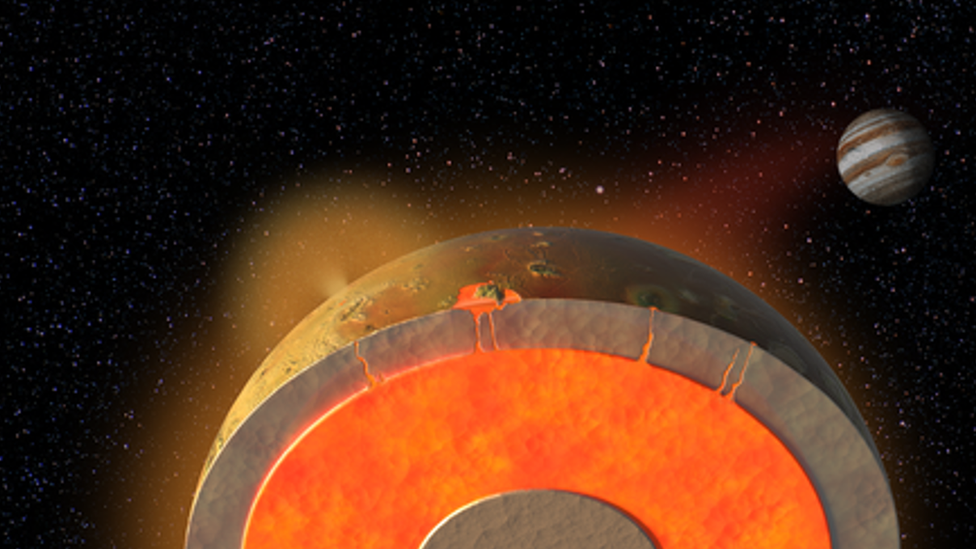
Researchers think this is because it's squeezed by Jupiter and the other moons nearby thanks to gravity, leading to volcanic eruptions larger than any on Earth today.
Facts about Io
Io is the fourth-largest moon in the solar system. It has over 400 active volcanoes on its surface.
The volcanoes were formed by friction inside the moon as it was pulled between Jupiter and the planet's other huge moons.
Because of this high friction in the centre, there's also huge mountain peaks on the surface.
Some of them are as tall as Mount Everest!
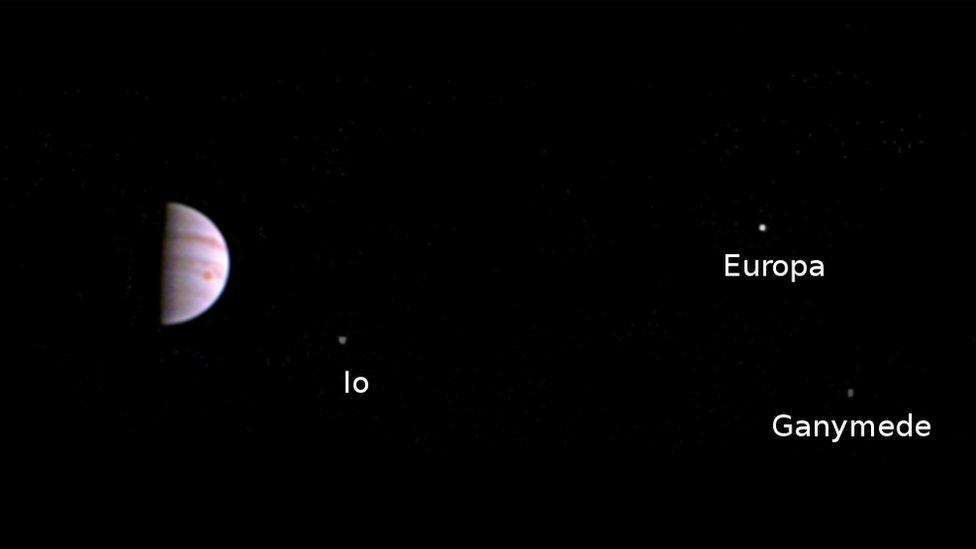
This image taken by Nasa's Juno spacecraft shows Jupiter with some of its moons
What makes Jupiter's moon Io so volcanic?
Io, Europa, and Ganymede are three of Jupiter's moons that regularly move around each other in a pattern. This is known as an orbit.
For every orbit of Ganymede, which is the farthest of the three from Jupiter, Europa completes exactly two orbits, and Io completes exactly four.
This means the moons pull on each other gravitationally in such a way that their path is forced into oval shapes rather than round as they move.
This allows Jupiter's gravity to heat the moons' interiors, causing Io's angry volcanic activity.
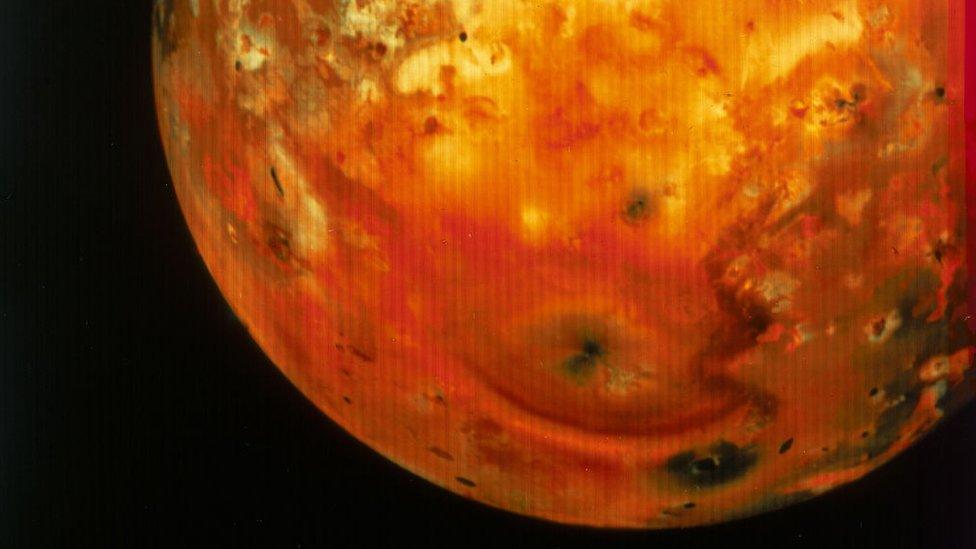
Io is highly volcanic and this picture shows several volcanic areas
How did researchers find out how long Io has experienced volcanic disruption?
To find this out researchers examined the chemicals in its atmosphere.
On Earth we can find information about past events through fossils and craters. However, Io's surface is relatively young because of the volcanic eruptions that keep covering it.
Io has no water, so the majority of the gas coming out of its volcanoes is the chemical element sulphur.
So scientists used an instrument called an ALMA telescope to measure the different types of sulphur on Io.
They then compared the results to sulphur levels in meteorites, which are remnants from the early solar system.
The results showed that Io has lost 94 to 99% of its original sulphur. This means the moon has been volcanically active for billions of years while losing sulphur to space the entire time.
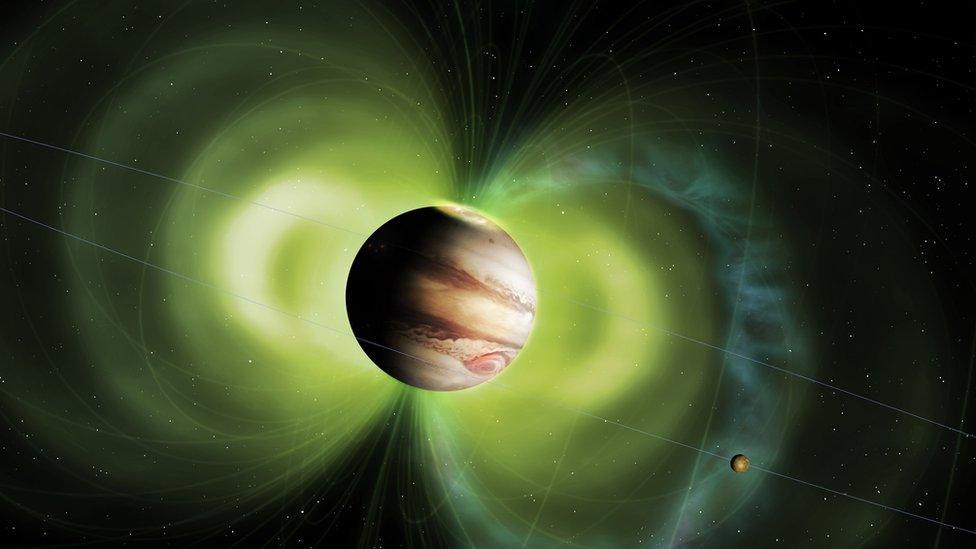
A diagram showing Jupiter, its magnetic field, and how it interacts with Io
A lot of work has gone into finding out about what Io is made of and scientists aren't done yet!
Now they want to learn what other gases Io may have lost over the course of its history - like why it appears to contain no water while the other large moons of Jupiter have plenty.
So there are still many secrets to uncover from this fascinating place.
- Published3 November 2023
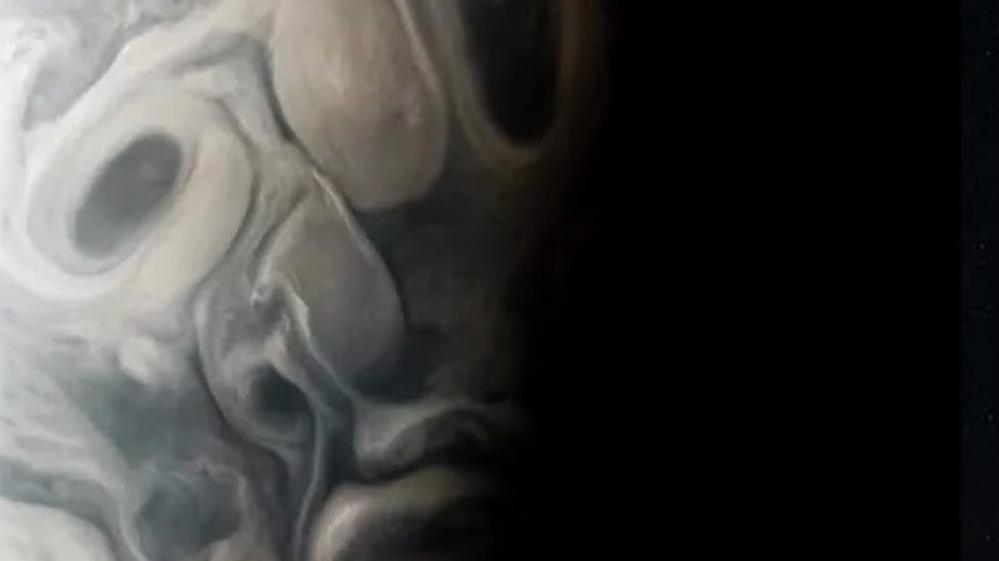
- Published19 December 2022
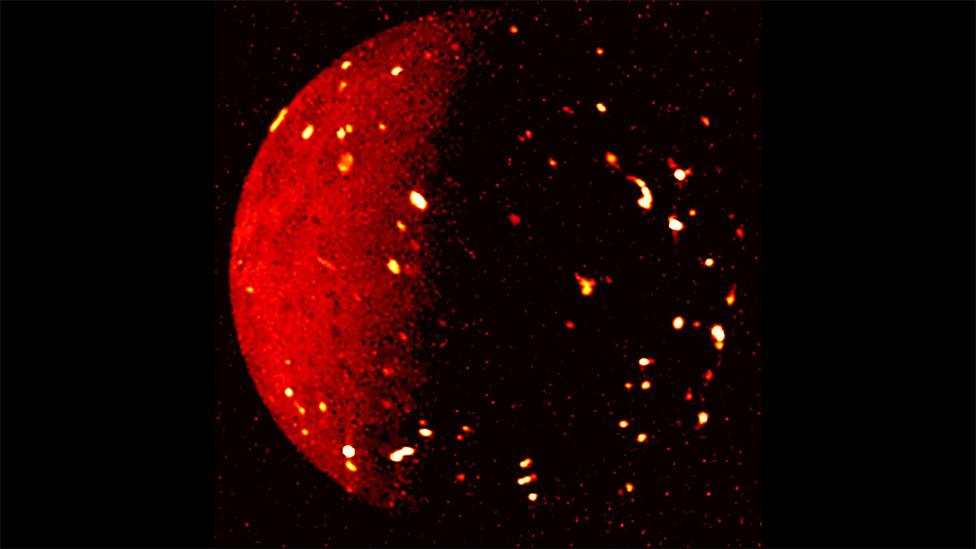
- Published5 August 2014
